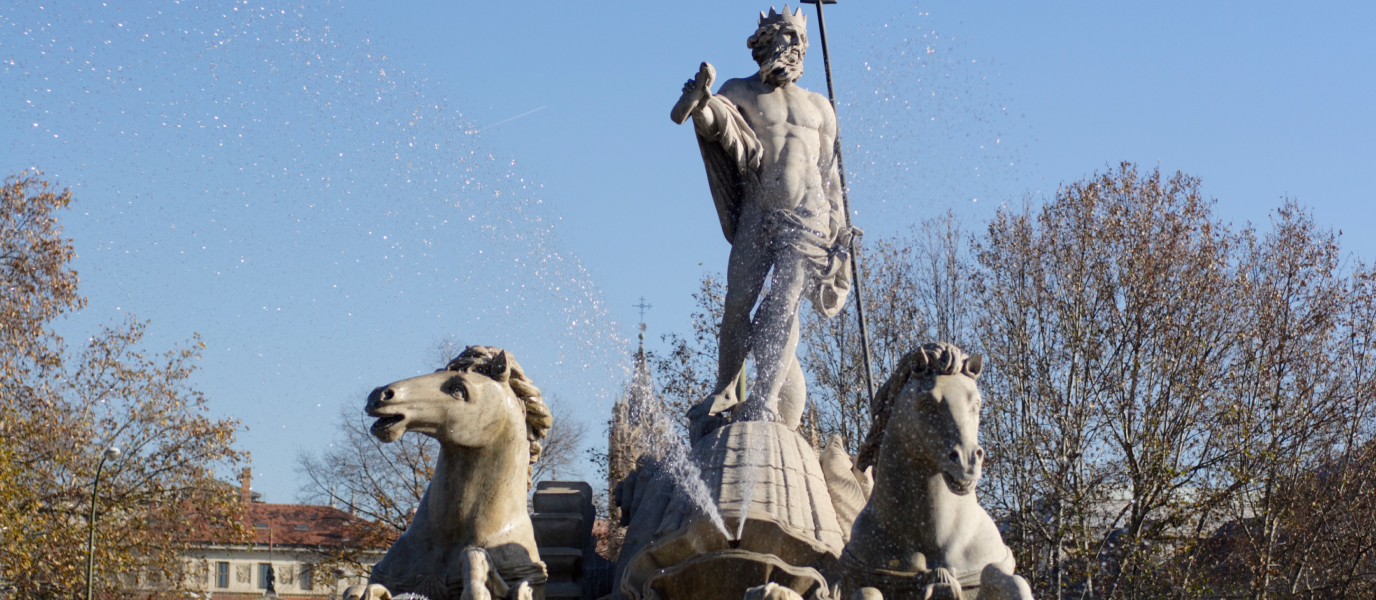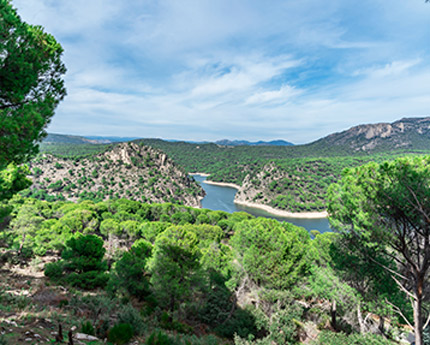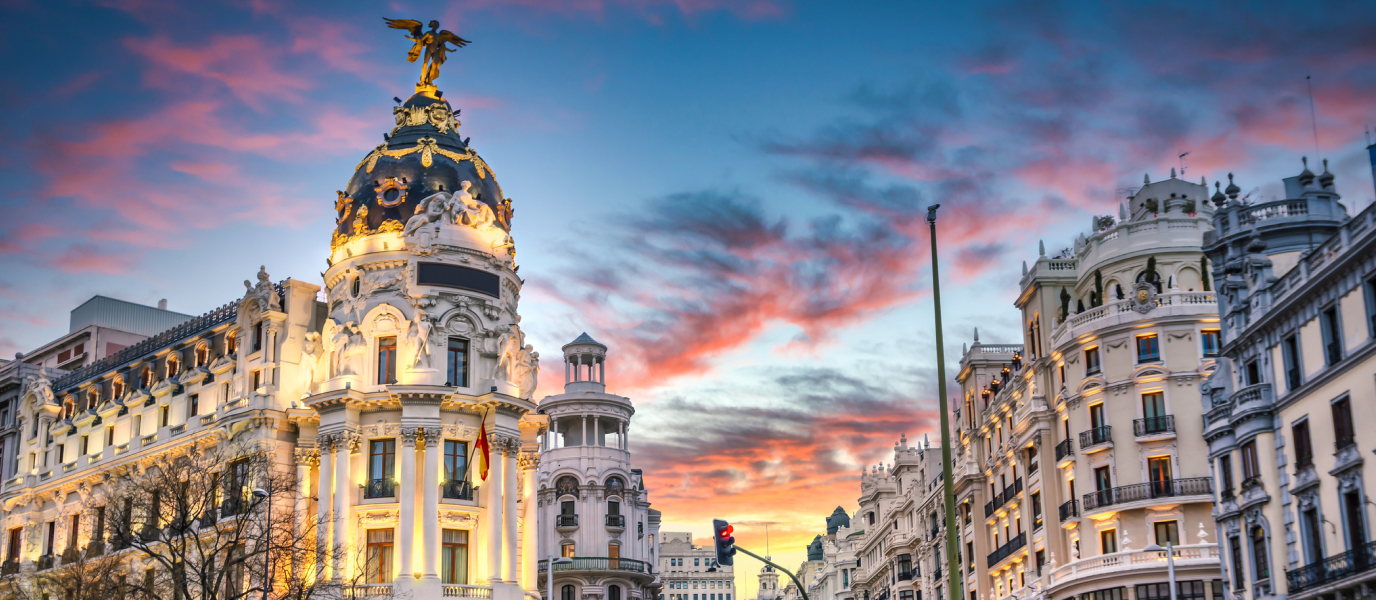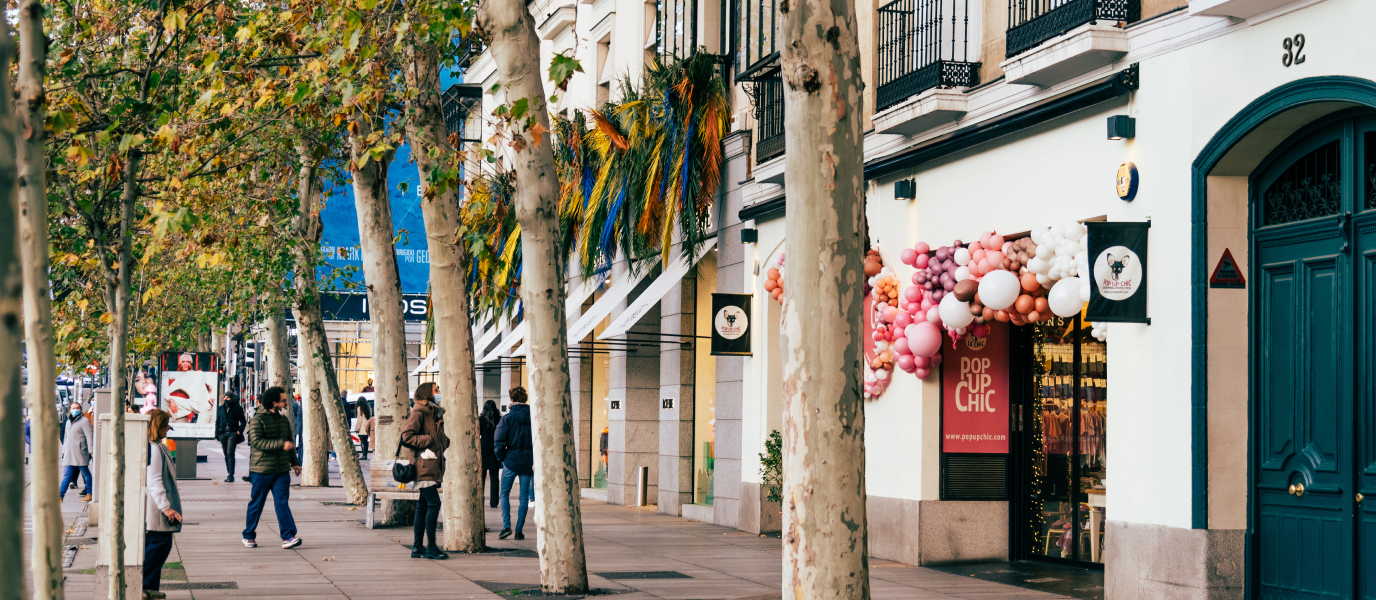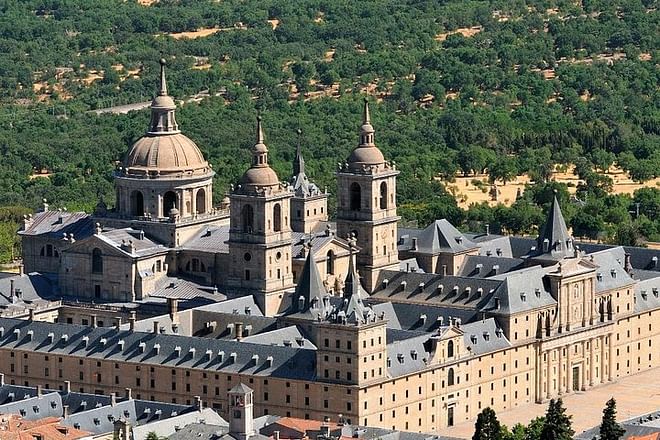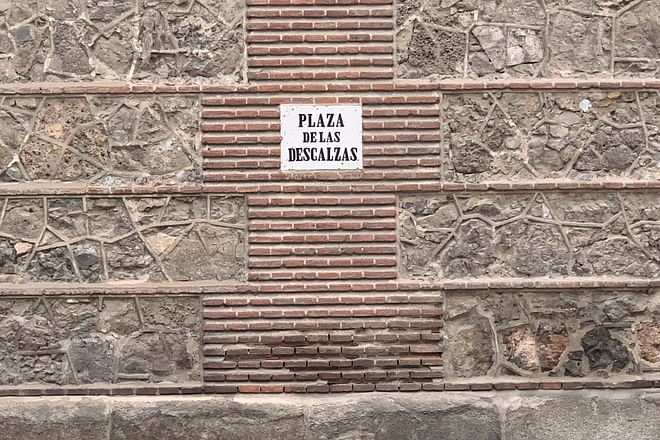Charles III is regarded as the best mayor of Madrid, thanks to his successive modernisation projects, which transformed the town into a modern capital city. His outstanding projects were the development of a sewerage system, the paving of the streets and the introduction of street lighting. Another great project initiated by the Bourbon King was the route of the artery now known as the Paseo del Prado, an urban axis along which were placed beautiful groups of sculptures such as the fountains of Neptune and Cybele.
The Fuente de Neptuno and the Madrid planned by Charles III
The sculpture of Neptune, the Roman god of the sea, presides over one of the most central roundabouts in Madrid, and is surrounded by iconic buildings including the Museo del Prado, the Museo Nacional Thyssen-Bornemisza, the Madrid Stock Exchange, the Royal Spanish Academy and the church of Los Jerónimos. However, at the time when Charles III commissioned the renowned architect Ventura Rodríguez to undertake the project for the Salón del Prado, as it was known in those days, this area was actually in the suburbs of the capital.
The King’s intention was to establish an elegant artery that Madrid’s inhabitants could stroll along, and which would be lined with palatial mansions and important cultural institutions. In short, Charles III had decided to bring Madrid up to the standard of more developed European cities by giving it a more modern feel.
So three fountains would be set along this great promenade (the fountains of Apollo, Cybele and Neptune), which would contribute greatly to its aesthetic attractiveness. Of the three fountains, it is the latter two that have attained the greatest popularity—or, at least, are most firmly rooted in the collective imagination of Madrid residents and foreigners alike.
This must owe something to the fact that they have become the focus of celebrations by fans of the capital’s two great football clubs, Real Madrid and Atlético de Madrid, as well as to their privileged location. Here, it is worth pointing out that neither of these monuments is located or orientated as originally planned by Ventura Rodríguez; their current positions are a consequence of a modification effected in the late nineteenth century.
What did Neptune symbolise for Madrid?
Neptune is the Roman counterpart of Poseidon, the Greek god of the seas who, with his trident was able to draw water from rock, and who sailed in a carriage pulled by hippocampuses. It seems that the choice of the god of the seas (who in the original plan was to be set facing Cybele, the goddess of the earth) would be an allusion to Charles III’s navy—the King made a significant contribution to strengthening the Spanish State’s naval forces, with the aim of improving communications with the country’s overseas colonies.
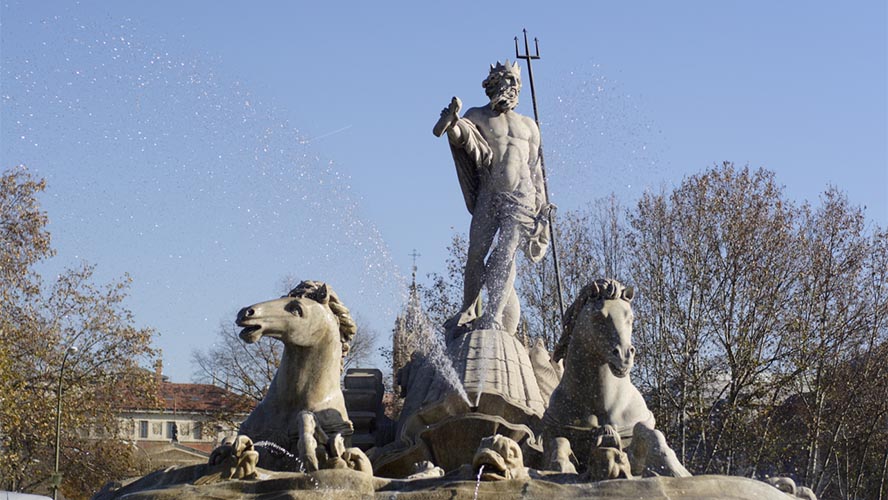
The sculpture, carved in Montes Claros marble, is of the standing, half-naked figure of the god, holding his ever-present trident with his left hand while his right hand holds a serpent coiled around his arm. His demeanour is elegant, while his face, with its bushy beard and serene gaze, commands respect. Neptune appears to be advancing as he stands in his shell-shaped chariot, pulled by seahorses. Meanwhile, water flows from a series of newts surrounding the fountain.
The creation of this work was entrusted to Juan Pascual de Mena who died before he could complete it. However, all the evidence suggests that it was completed in 1786 by his disciple José Arias. Subsequently, the Fuente de Neptuno underwent various modifications, including the previously mentioned change in location at the end of the nineteenth century, when it was orientated to face the Plaza de las Cortes—as well as other, rather more bizarre changes, such as the replacement of the bronze trident by an iron one on 1914, the original having been stolen.
Neptuno and Atlético de Madrid
Nowadays, any fan of Spanish football will immediately associate the Fuente de Neptuno with Atlético de Madrid, as this is where the red-and-white club celebrates when it wins a title, while its eternal rival, Real Madrid, celebrates in the nearby Fuente de Cibeles. However, few people know that not so many years ago, the opposite was true: Cibeles was colchonera [popular name for Atlético de Madrid] and Neptuno was merengue [popular name for Real Madrid].
The story begins in 1953, during the 50th anniversary of the red-and-whites and in the three-way tournament organised to commemorate the occasion. Atlético incorporated into the trophy a representation of the famous Fuente de Cibeles. Strangely, in 1977, on the 75th anniversary of Real Madrid, the City Council presented the white club with a sterling silver replica of Neptune.
On the other hand, it was Atlético de Madrid fans who, in 1962 after winning the Cup Winners’ Cup, started the tradition of holding celebrations at the Fuente de Cibeles. Nevertheless, during the 80s, the fountain became the customary scene of celebrations, by fans not of Atlético de Madrid, but of the Spanish national team and of Real Madrid. In fact, the five consecutive league titles won by the white team between 1986 and 1990 so firmly established the tradition of the merengues celebrating at Cibeles that when Atlético de Madrid won the Copa del Rey in 1991, the colchoneros opted to move a few metres to the south and establish their very own celebration spot: the Fuente de Neptuno.
That is where the red-and-whites (affectionately known as “el pupas”) celebrated their victory over Real Madrid in the 2013 Copa del Rey and the 2014 League Championship.
























































